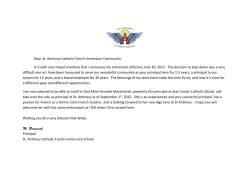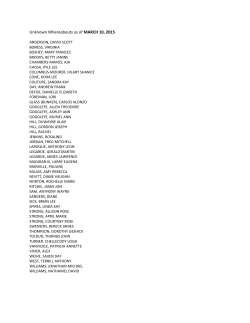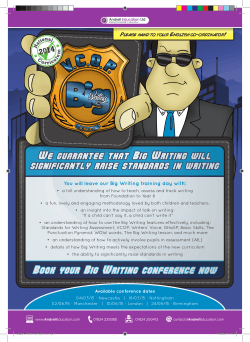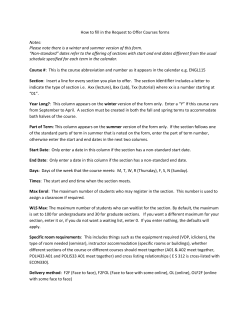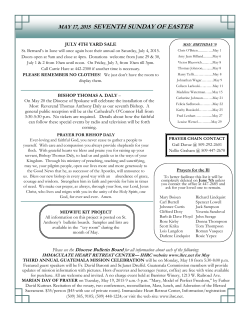
Preface - Novella
Preface The field of management control has come a long way since Robert N. Anthony first coined the term ‘management control’ in the third quarter of the last century. Traditionally, management control logic was firmly based on the organization’s accounting system. In such settings, management control was about the importance of a well-designed budgetary control system for target setting, performance measurement and an array of variance analyses. Starting with the first issue of this textbook, that traditional picture has changed dramatically. Over the lasts decades, management control has developed into a discipline that integrates and orchestrates various other fields of management such as strategy, operations and even human resources. In this book, we demonstrate that this has caused management control to expand vastly beyond its traditional boundaries. Management control now plays a central role in the management of any medium and larger organization, both in the profit and not-for-profit sectors. Management control systems now more than ever are vital to connect the strategic horizon of the overall organization to the day-to-day activities of decentralized managers who are accountable and responsible for their operational units. This book is a fully updated and revised edition of the classic US textbook written by Robert N. Anthony and Vijay Govindarajan, which laid the foundation for the field of management control. Its focus on the manager – whose behaviour is guided by systems, tools and techniques – still remains the core of what management control is all about. However, current trends such as globalization and hyper-competition have led to an increased attention to a number of new control challenges that contemporary organizations face, like how to operate in a changing strategic environment and combine dynamism and stability; how to control inter-organizational relationships between firms in strategic cooperation; how to integrate modern insights on human motivation into the design of performance management and incentive systems; and how to deal with management control varieties between organizations in Europe, the Americas, Asia and beyond. Target audience W hilst retaining the key strengths of the 12th US edition, it is with these contemporary challenges in mind that we have sought to develop an up-to-date text that offers an international approach appropriate for use in courses at undergraduate and graduate levels in Europe and other countries outside of the USA. This book is intended for any of the following uses: • Courses for graduate students with a specialization in accounting and who wish to study management control in greater depth. • Courses for undergraduate students who have a solid background in management accounting. • Courses for graduate students in strategy, organization theory or organizational behaviour who wish to strengthen their knowledge of administration. • Executive development programs in finance, financial management or accountancy. • Professional programs for chartered controllers, accountants, and auditors. • A handbook for general managers, management consultants, computer-based systems designers, and controllers—those who are involved in or are affected by the management control process. 9780077133269_A01.indd 16 12/3/13 10:24 AM Preface xvii End-of-chapter cases T he educational value of the cases comes from the practice the student receives in analysing management control problems and in discussing and defending his or her analysis before the class. The cases aim to train students in applying sound and rigorous analyses to case questions. The cases are not necessarily intended to illustrate either correct or incorrect handling of management problems. This means that there are strictly no right or wrong answers. We have used some classic cases that users have found most helpful in accomplishing the objective of their course. In addition, we have developed cases that are fully up-to-date with current world economic developments. Instructors will find that this case collection does an excellent job of meeting classroom needs for several reasons: • Many cases are based on major global corporations such as ABB, The Body Shop, Lego, Toyota and Lincoln Electric. • These cases expose students to various types of organizations, small organizations, large organizations, manufacturing organizations, service organizations, and nonprofit organizations. • The collection presents many contemporary cases, providing students with interesting situations that they will enjoy, and from which they will learn. • We have given significant attention to case length. A major effort has been made to ensure a good mix of cases, from short, medium and long cases to ‘two-day’ cases, and ‘two-part’ cases. • The case collection is flexible in terms of course sequencing, and the cases are comfortably teachable. Other important improvements include: • Fully revised and updated to include current methods in management control, including coverage of • • • • • • • control tightness, strategic management accounting, management control of shared service centers, management control of cross-functional teams and beyond budgeting. The chapter on compensation, incentives and motivation has been extended to include coverage of motivation crowding theory. The chapter on investment centres has been extended to include coverage of the Du Pont formula and the differences between Return on Investment (ROI), Residual Income (RI) and Economic Value Added (EVA). Improved structural framework creates better links between chapters, improves the foundations on the fundamentals of management control and consolidates strategy coverage. Two new chapters have been added: Chapter 3 on organizations and their environment covers both corporate governance and corporate social responsibility (CSR), and Chapter 14 covers management control and inter-organizational relationships. International focus: each chapter includes new and diverse real-life examples throughout the text to emphasize actual practice in major corporations such as Ikea, BMW, ABB, Ryanair, Zara, Tetra Pak, Lincoln Electric, Unilever and Nestlé. New real-world vignettes at the beginning of each chapter that introduce the methods and concepts covered and illustrate their practical relevance to support students in their learning. Comprehensively updated with current research that is more international and from prestigious journals such as Accounting, Organizations and Society, Harvard Business Review and Management Accounting Research. At the end of each chapter a list of suggested further reading is provided. New learning objectives at the beginning of each chapter provide a better structure for students to learn from. Improved supplementary resources include a brand new online website, featuring PowerPoint slides, a complete lecturer’s manual and full case study solutions exclusive to instructors. We are honoured to be part of Anthony and Govindarajan’s Management Control Systems history and we hope you read this book with as much pleasure and excitement as we had writing it. Frank G.H. Hartmann, Kalle Kraus, Göran Nilsson 9780077133269_A01.indd 17 12/3/13 10:24 AM
© Copyright 2025
